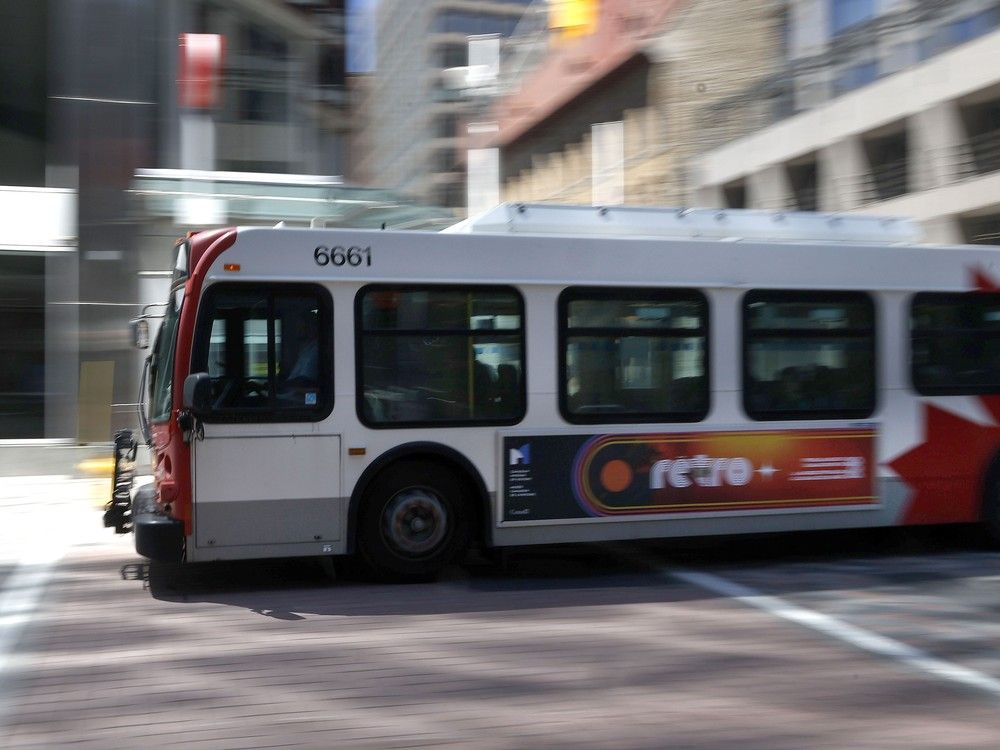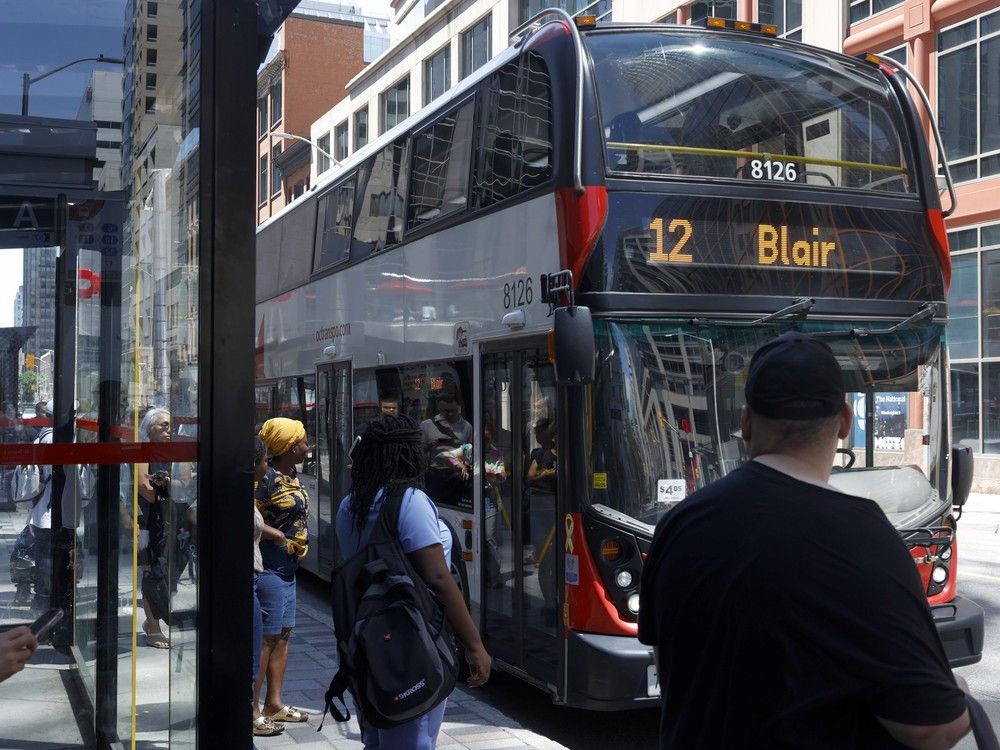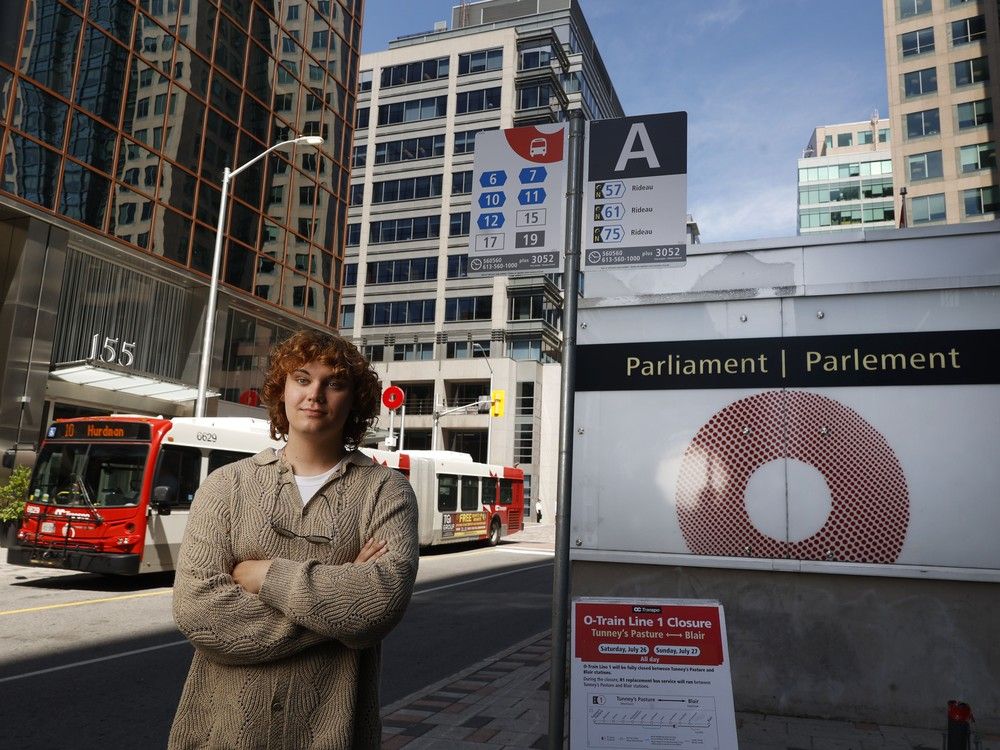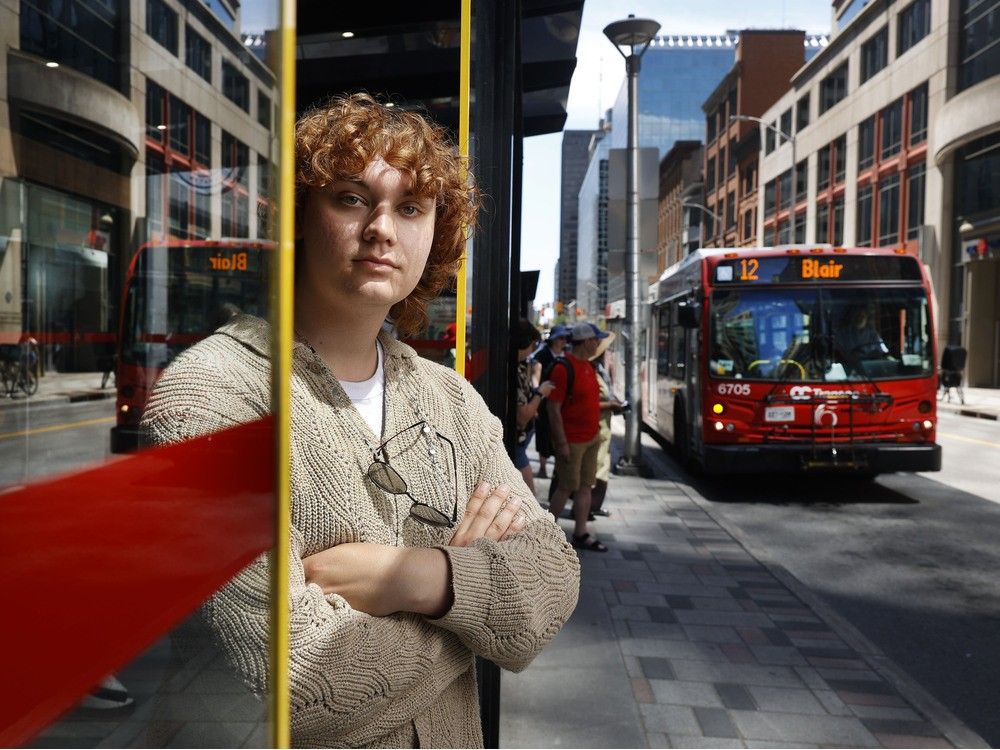Maeve Villeneuve-Elson is one of the few people in Ottawa who finds their commute from Stittsville easy.
Their suburban neighbourhood finally has an express bus close to their home, allowing for an easier ride straight to Tunney’s Pasture station, where they take LRT Line 1 for their job at the House of Commons.
“The only regular bus service was over a kilometre and a half walk away, whereas now there is at the very least an express bus that comes early in the morning that takes me downtown, semi-reliably,” the fourth-year Carleton University student said.
It normally takes Villeneuve-Elson around 90 minutes to reach downtown Ottawa, assuming there are no delays. But, despite this progress, Villeneuve-Elson says there are still
flaws
within
OC Transpo’s
New Ways to Bus
system.
“I have found that the express buses are more consistent, reliable and on time within 15 minutes of when they’re supposed to show up,” they said. “On the other hand, I’ve noticed that the regular bus services … have become more unreliable and are more likely to be more delayed.
“I found that, outside of the peak hours, the buses are very unreliable.”
New Ways to Bus was launched by OC Transpo on April 27. It was a major overhaul of more than 100 bus routes across the city focused on increasing reliability and efficiency within the bus system. This initiative introduced new routes, retired others and added adjustments to the routes that remained.
But the new scheduling has commuters from the suburbs of Ottawa often commuting on the bus for at least three hours every day — 90 minutes in each direction — barring no delays.
How hard have the changes hit suburban Ottawa?
Tom Ledgley, a co-ordinator with grassroots organization Horizon Ottawa, says OC Transpo’s new bus transit system has caused more problems for the suburbs, especially in neighbourhoods like Kanata, Stittsville, Nepean, Barrhaven and Orléans.
He recalls seeing an online petition circulate after the New Ways to Bus changes were implemented. Residents in the Kanata Lakes neighbourhood had called for immediate action to improve the bus service in the suburban neighbourhood, including a dramatic increase in travel time.
“We must now travel farther than ever before to access public transit in our neighbourhoods, only to arrive at bus stops where service has been slashed, and buses arrive much less frequently,” the petition reads. “Some buses never arrive at their scheduled times, others are frequently late or followed immediately by other buses following the exact same route.”
Buses like the 88 Hurdman are now overcrowded and only reliable during peak hours, Ledgley said. The routes should be replaced with the previous ones and OC Transpo should “reverse this route review,” he said.
“Everything has gotten worse since April 27,” he said. “What we are hearing from these residents, mostly, is that it was fine before (OC Transpo) made the cuts.”
Coun. David Hill for Barrhaven-West ward says the New Ways to Bus system has “essentially changed the concept of busing” in the city. It would be difficult to revert back to the old routes when the investment into making an efficient bus system has already been made.
“We’re making evolutionary progress and improvement,” Hill said. “What we need to focus on is identifying the issues that are coming up and fixing those.”

How are longer commutes affecting transfers?
Hill says OC Transpo and the city need to prioritize winning transit riders’ trust back when it comes to bus routes. He’s introducing a motion to the city’s transit committee to increase the current 90-minute
transfer window
to ensure riders aren’t paying twice for the same trip.
“The challenge is that there’s an additional transfer that happens locally that didn’t used to happen, and that’s the reason why someone could potentially be getting double charged,” he said. “It just shouldn’t be the case where somebody going from point A to point B ends up paying twice for their ride.”
Hill mentions mitigating factors that could delay a commuter’s ride, like ongoing construction, rush hour traffic and general delays. With the New Ways to Bus system, an additional transfer occurs for Barrhaven residents locally.
“The core issue we need to focus on for the New Ways to Bus system to be effective is those afternoon peak buses that are leaving Tunney’s Pasture,” he said. “If those are reliably on time and consistent, then we won’t have the problem with the transfer window issues and then ultimately …it can be a better system.”
But Ledgley says no route should take longer than 90 minutes in the first place, especially when it takes around 25 minutes to commute from the suburbs to downtown Ottawa by vehicle.
“That’s only solving one part of the problem,” Ledgley said. “It’s also that nobody wants to be taking two and a half hours for their commute, right?”
Hill says transit coming through Tunney’s Pasture station could be more reliable for commuters, alongside extending the transit fare windows.
The transfer window becomes an issue when commuters run errands around the city and encounter unreliable bus frequencies and delays, says Nick Grover, an executive member with Free Transit Ottawa.
“It’s not an enjoyable experience, even before New Ways to Bus,” he said.
In a July 23 emailed statement, Katrina Camposarcone-Stubbs, a public information officer with OC Transpo, said that they were analyzing the “potential impacts” of extending the transfer window in response to Hill.
“This analysis will include a review of whether any routes consistently exceed 90 minutes,” she wrote. “At this time, the scheduled duration of the majority of customer trips take place in less than 90 minutes; however, staff will be investigating travel times further.”

What’s pushing people away from transit?
Transfers also became an issue when a route was eliminated and replaced by at least two others, Grover says.
“If you’re going from A to B, there’s more transfers involved, resulting in longer commutes and also a worse last-mile challenge,” he said, referring to bus stops that were removed and installed five or 10 minutes away.
With Ottawa’s weather behaving in uncertain ways — like increasing
heat waves
, smog and thunderstorms — Grover says people are “checking out” of the public transit system and opting to purchase personal vehicles.
“Or they’re having to suffer through it because they have no other choice,” he said. “For some people, that just means going out less … We’re leaving people isolated and with less access to the city.”
Off-peak service is another essential area where OC Transpo could improve, so commuters relying on transit outside of peak hours can travel around the city more easily, Grover says. Dedicated bus lanes could also help alleviate traffic, causing the route delay, and free fare for certain demographics within Ottawa could be considered.
These things are necessary so that people “so poorly treated by this transit system” may think about returning to it, he said.
Villeneuve-Elson, must account for the extra time they would spend on an OC Transpo bus if they left work a little later and missed an express bus back to Stittsville.
“My commute home changes from being about an hour to an hour and a half to being well more than two hours,” they said.
How did we get here?
Coun. Wilson Lo, representing Barrhaven East, says there were “several layers” that got Ottawa’s public transit to
where it is today
. As a former OC Transpo bus operator, some of the reasons he’s experienced delays are as simple as “hitting the right combination of red lights.”
“It’s created a lot of frustration (and) a lot of burden on our passengers,” Lo said. “A lot of people have left transit.”
Discontinuing some express buses has hit residents hard, especially those relying on them during peak weekday hours. Factoring in the “
trauma
of the LRT launch” and transit users
reminiscing
about a time when transit was efficient, Lo says the changes have been “negative” for a lot of commuters.
The “psychological barrier” of more transfers down the line has been a drawback for residents, and the promises of reliable transit have not “panned out” as planned.
“That unfortunately overshadowed a lot of the positive, good changes that have happened,” he said, referring to improved off-peak local travel in Barrhaven.
With the New Ways to Bus route changes, Camposarcone-Stubbs says OC Transpo understands that each commuter’s journey is “unique” and that some may be experiencing longer travel journeys, additional transfers or a longer walk to the bus stop.
“Since New Ways to Bus launched, staff have been monitoring ridership levels across the network, gathering feedback from customers, and collecting observations from frontline staff,” she wrote.
That feedback is used to inform future adjustments to OC Transpo’s bus network through service change processes, Camposarcone-Stubbs says, which take place four times a year.

Are there enough buses for the city’s demand?
No, there are not.
A maintenance
backlog
continues to impact OC Transpo’s fleet, with a number of defects found during inspections. Their current fleet is set to surpass its 15-year life cycle and must be retired by April 2026.
In addition, they’ve been facing challenges in procuring e-buses due to production delays affecting deliveries to the Ottawa market. These are some of the factors outside of OC Transpo’s control, Lo said: “This is an industry-wide issue.”
Theoretically, if Ottawa can get the delayed vehicles right now, it would be an “easy fix.” But there are not enough buses to return to the old network, Lo added.
Villeneuve-Elson says OC Transpo’s buses are constantly breaking down, which leads to route cancellations or not enough buses to cover all the city’s required routes, impacting people’s commutes and delaying bus schedules.
“It cascades through the day, kind of like a set of dominoes,” they said.
Is free, public transit a need for Ottawa residents?
Horizon Ottawa has been consistently advocating for
free transit
every year, Ledgley said: “It should be run as a public service, not as a business.”
When the New Ways to Bus system first launched towards the end of April, OC Transpo offered free-fare service for the
first weekend of May
. At the time, then-transit service manager Renée Amilcar said it was a way to introduce the “new OC Transpo” and encourage riders to try it out.
During
Bluesfest’s
nine-day stint, OC Transpo saw “
strong ridership
” throughout the festival, with an estimated 650,000 customer trips on Line 1 and 87,000 trips on Line 2. This was the first year when Lines 2 and 4 ran alongside Line 1 during the festival.
Grover says these were examples of when ridership on public transit skyrocketed.
“It’s a great way to remove a barrier while also compensating for the fact that the service has been incredibly subpar,” he said.
Our website is your destination for up-to-the-minute news, so make sure to bookmark our homepage and sign up for our newsletters so we can keep you informed.
Join us! The Ottawa Citizen is hosting an exclusive food and beverage tasting event where you can try bites from some of the city’s best restaurants and sample beverages from breweries and wineries. Meet the chefs and try their signature dishes with members of the Citizen news team. Learn more about Ottawa Citizen Best Restaurants and buy a ticket
here
.
Related
- Renée Amilcar departs with OC Transpo in a better, but still challenging place
- People have lost trust in OC Transpo, riders group says on free-fare weekend



